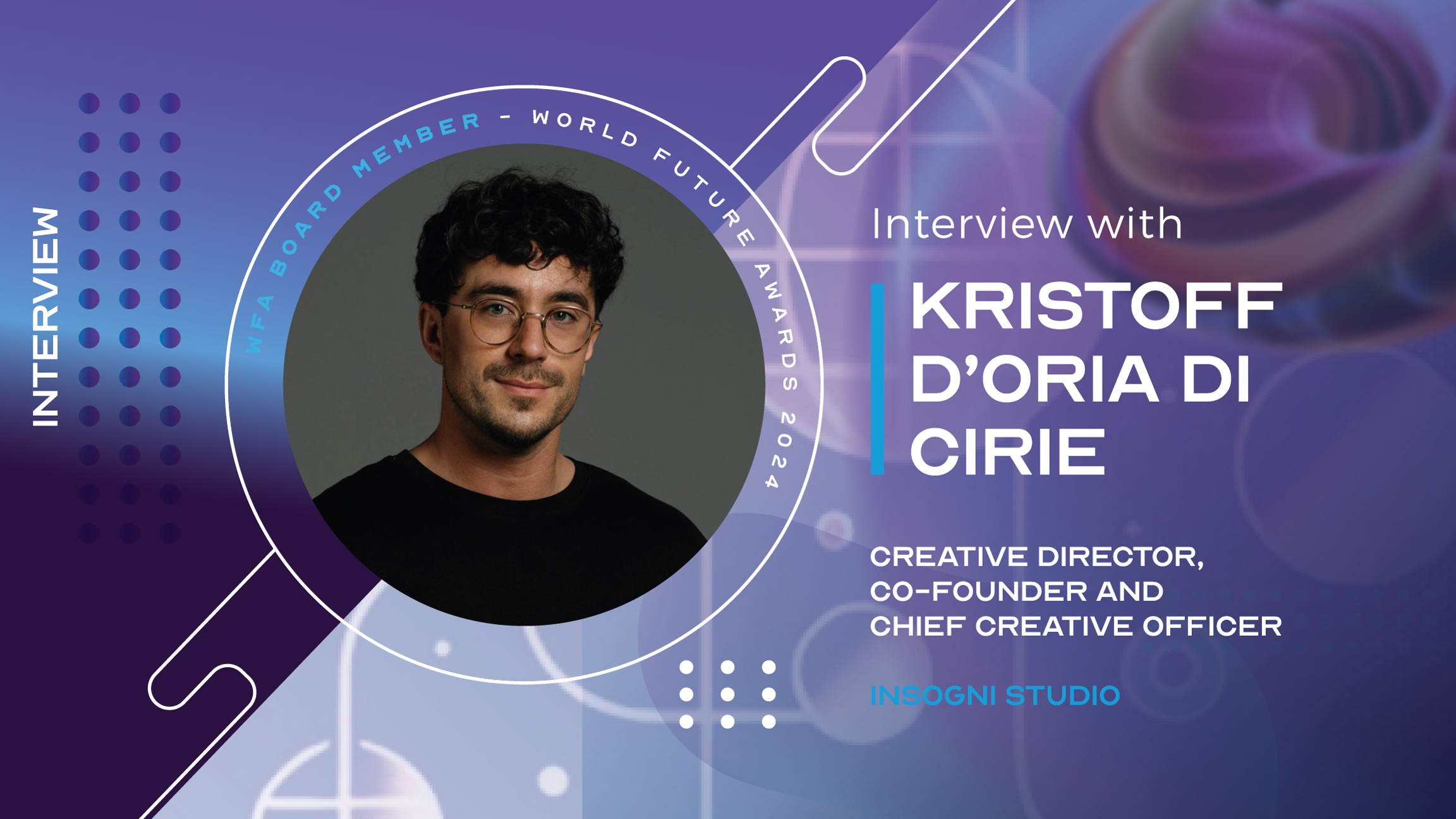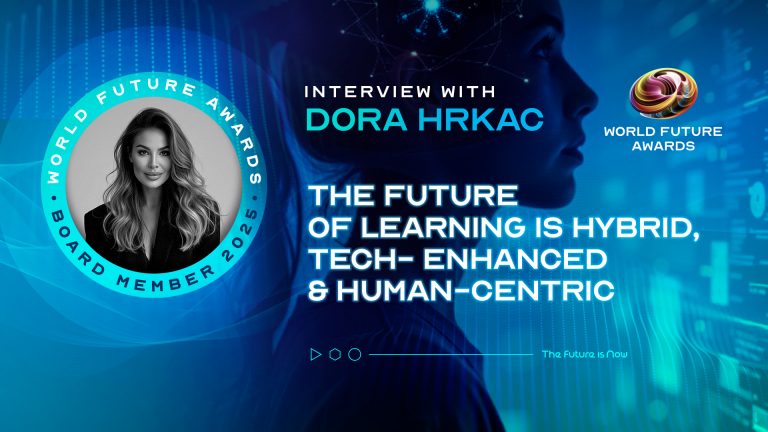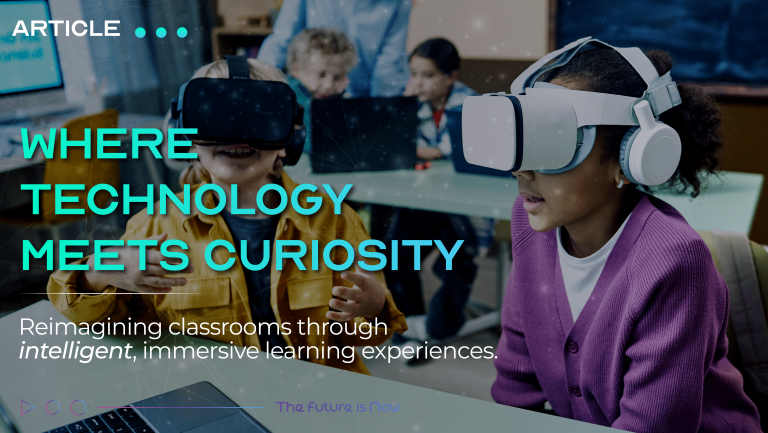
Designing the Interiors of the Future: Interview with Kristoff D’oria di Cirie
One of the major factors influencing how our future will look and feel is design. Today, we have a great opportunity to learn more about what it takes to create engaging designs from Kristoff D’oria di Cirie, creative director, commercial interiors, and immersive design specialist with over ten years of experience, and the World Future Awards board member.
World Future Awards: First of all, let us welcome you as a board member of World Future Awards. Your experience and commitment will be an invaluable contribution to the process of selecting and evaluating the best of the best innovative initiatives and projects. Please tell us about your first steps in your career. How and why did you choose your field of expertise?
KDC: You know, I originally set my sights on a career in Finance, focusing on trend analysis. It’s always been easy for me to spot patterns and trends. But life has its twists. While I was in university, I took a part-time gig at a web design agency just to pay the bills. After graduating, I packed up and headed straight to South Korea. There, I began freelancing, mostly doing branding work for other studios. As clients wanted more, I found myself juggling different roles. And you know what? It started making sense. All these roles, they all connected in a way I hadn’t seen before. That’s when I realized I was diving deep into immersive experience design, and it felt right.
WFA: What are the attributes and characteristics of contemporary and relevant interior design?
KDC: I’m not sure if there’s an adequate term for it yet, and names are normally retrospective anyway. But I think the idea of a set aesthetic or form is in itself old-fashioned and not contemporary. Now, I am seeing a much more agnostic approach and a greater focus on the process of environmental branding. At least commercially.
WFA: Based on the current state of the industry, what are the prospects and trends for interior design in the foreseeable future?
KDC: If AI tools are used correctly, I think there is a tremendous opportunity for designers to engage clients in more explorative processes that can really push the boundaries of what sorts of ideas are adopted. We could see a real blossoming of brand differentiation and distinct strategies. That’s a trend I feel confident about: differentiation and not conformity.
WFA: In what ways are advances in technology driving the development of design? And can we say that design has the same beneficial effect on technology?
KDC: Other than Generative AI tools, designers should keep an eye out on what is happening in terms of integrating approaches from art installations and events like: projection mapping, transparent LEDS, and sensory design. As well as consider how, in coming decades, their work will cohabit with mixed reality and extended reality tools like Apple’s Vision Pro.
WFA: Your projects are distinguished by your unique approach and visual style. Tell us about the vision and ideas behind your designs.
KDC: You know, I’ve always been drawn to art history and those classic ideas of beauty and had been pretty firm ideas. And spending time in Korea and Japan opened my eyes in ways I can’t even begin to describe. It’s like I saw beauty from a whole new angle, and I think you can see that influence in my work. Being in these places, it felt like stepping into another world. These are those ‘aha’ moments, those bursts of wonder, that I want to capture in my designs. I like to think of my spaces as portals – not just to a new location, but deep into our wildest imaginations. It’s as much about all the possible new ‘selves’ as it is about new places.
It’s like when a kid gets lost in a daydream, that spark of pure wonder. I want to take that fleeting magic and give it shape, make it tangible. So, in a nutshell? My designs are all about unlocking that hidden realm of imagination, taking you on a journey where you can truly feel and dream. It’s about seeing the endless possibilities out there, even if just for a brief moment.
WFA: What criteria must an interior design meet for you to call it successful and effective?
KDC: I’m just not really interested anymore in arguments of taste or style – it’s all transitory, and cycles are moving at 3 times the rate. For me, I’m looking for a definite understanding of a space’s identity or brand, a clear communication of emotion, and strategies to foster meaningful moments, be they alone or communally. If we are serious about sustainability, this is the approach we need to adopt to have environments designed to last decades.
WFA: When it comes to innovative technology and design, it’s impossible to ignore the influence of artificial intelligence. What role does AI play in your work?
KDC: You are right. But I choose to look at it in an optimistic sense. In my own practice, I use it as a demonstrative tool rather than a product in itself. It’s an incredibly effective way of articulating new or complex design concepts. What it does urge is for designers to move up the value chain and get serious about understanding the human processes and impacts of their design.
WFA: What do you see as the way to find a balance between artificial intelligence and live human creativity? How do you ensure the most effective interaction between man and machine in design?
KDC: I think we should look at these tools as an extension of our sketchbook. Great for breaking inertia, exploring ideas you might not have previously, or just quickly falsifying concepts. I’m still pretty skeptical about the notion that we can use these out of the can, so to speak, and even if there is an eventual state where they look good enough – designers are still going to have to craft everything else around those visuals.
WFA: What are your expectations from the World Future Awards nominees? What requirements do they have to meet to win the award?
KDC: That’s a great question, and I’ll circle back to a previous answer here. I need to see a real focus on the experience of those interacting with the project and how well it fosters meaningful human moments. I’m really looking for design that does more than look good; it needs to leave the user transformed in some way – big or small.
To learn more about Kristoff, visit his LinkedIn profile.
MORE NEWS

Next Generation Companies 2025

The Future of Learning is Hybrid, Tech-Enhanced & Human-Centric – Interview with Dora Hrkac, WFA Board Member

Connected Futures: The Rise of Smart Homes

Driving Global Change Through Marketing Intelligence: An Interview with Tonia Maneta of Bizzdesign

Beyond Borders: The New Era of Remote Learning and Global Education Access

Reimagining the Classroom: How EdTech Innovators Are Building the Future of Learning

World Future Organization Launches the 2025 Global Future Readiness Index for Countries under the Futurebility Program
NEWSLETTER
Sign up to learn more about our project and to stay up to date.

